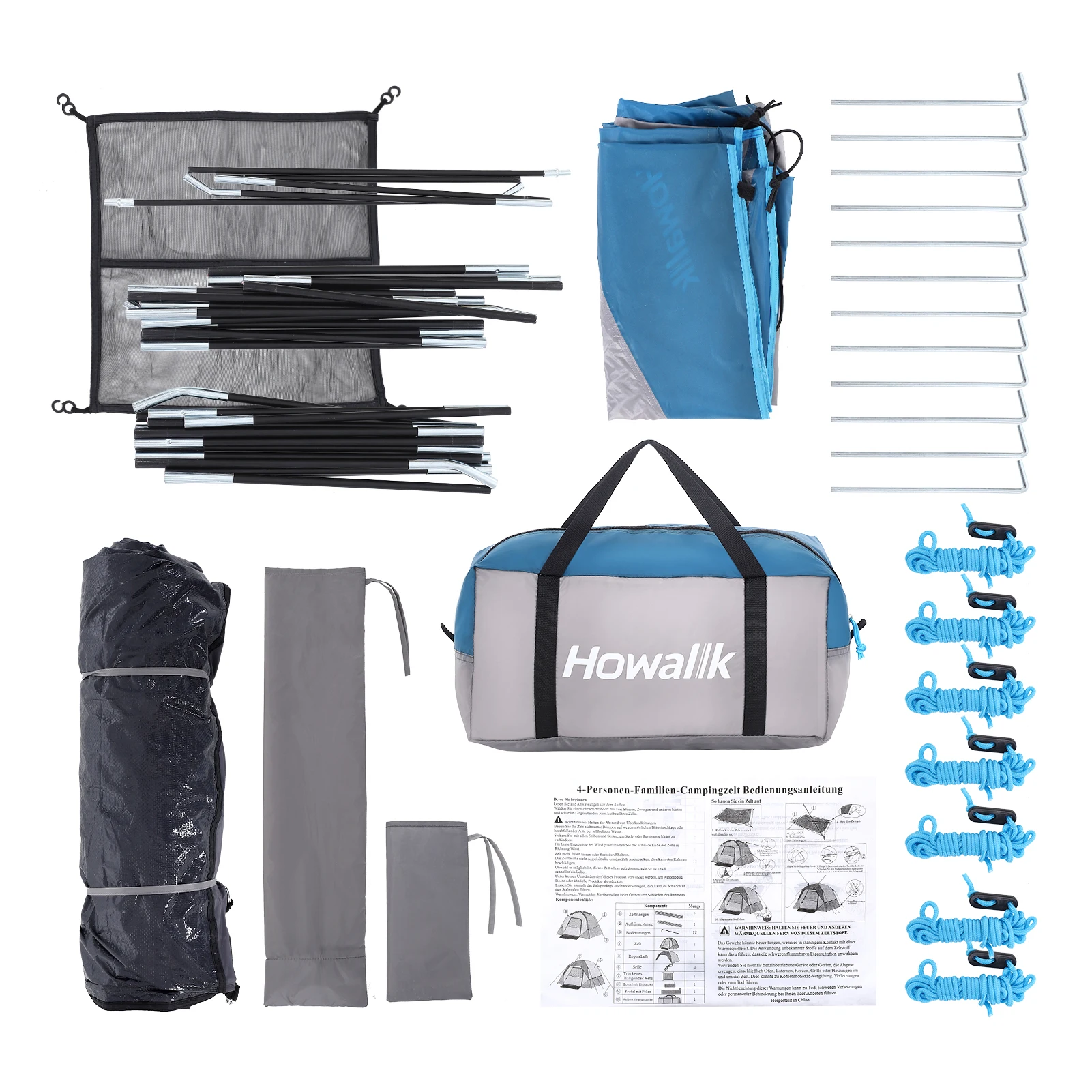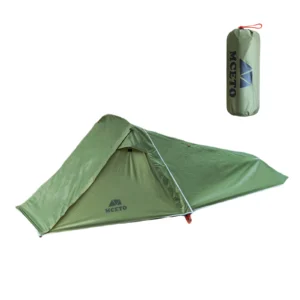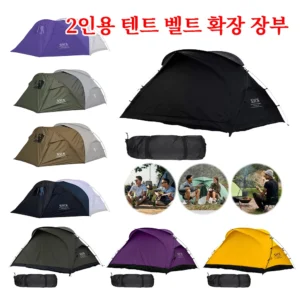Snow camping offers a magical winter wilderness experience, but staying warm in freezing conditions is crucial for both comfort and safety. Understanding how to maximize the thermal efficiency of your two-person snow tent can transform a potentially miserable outing into an enjoyable adventure. This comprehensive guide explores everything you need to know about keeping warm in winter conditions.
Understanding Thermal Efficiency in Snow Tent Environments
Thermal efficiency in snow tents refers to how effectively your shelter retains heat while minimizing heat loss. To appreciate this concept fully, we need to understand how heat transfers in tent environments:
- Conduction: Heat loss through direct contact (primarily through the ground)
- Convection: Heat loss through air movement (drafts and ventilation)
- Radiation: Heat loss through emission of infrared energy (through tent walls)
A critical reality often misunderstood by new winter campers is that tents primarily serve as protection from wind, precipitation, and snow—not as primary insulators. Unlike buildings with heating systems, tents don’t generate heat themselves. The temperature inside your tent will typically be only 5-10°F warmer than the outside air temperature without additional heat sources.
Common misconceptions include believing that body heat alone will significantly warm a tent’s interior or that any tent labeled “winter” will keep you warm regardless of other factors. Understanding proper shelter options for two campers and selecting appropriate 4-season winter 2-person tents designed specifically for cold conditions are important first steps in your thermal efficiency journey.
The Four Pillars of Thermal Efficiency in Snow Tents
Achieving optimal warmth in winter camping requires an integrated approach built on four essential components that work together:
The tent structure itself: The materials, design, and features of your snow tent create the foundation of your thermal system.
Your sleeping system: Sleeping bags and pads provide critical insulation between you and the cold ground and air.
Site selection and setup: Where and how you position your tent significantly impacts its thermal performance.
Personal preparation: Your clothing, nutrition, hydration, and activity all affect your body’s ability to generate and retain heat.
No single element can compensate for deficiencies in the others. For example, even the most expensive four-season tent won’t keep you warm if you have an inadequate sleeping pad or poor site selection. Proper mastering tent packing tips ensures you have all necessary components for an effective thermal system.
Choosing a Thermally Efficient Two-Person Snow Tent
Key Features for Enhanced Thermal Efficiency
When selecting a tent for snow camping, specific features contribute significantly to thermal performance:
Four-season designation: These tents feature stronger pole structures, minimal mesh, and often include snow skirts that prevent drafts and can be packed with snow for additional insulation.
Double-wall construction: The air gap between inner and outer tent walls provides additional insulation by trapping a layer of warmer air.
Appropriate size: Smaller tent volumes require less body heat to warm the interior space. While having adequate room for two people and gear is important, excessively large tents are more difficult to keep warm.
Strategic vestibule design: A well-designed vestibule allows you to store wet gear outside the sleeping area, reducing interior moisture while providing a thermal buffer zone.
Material Considerations for Cold Weather
The physical materials of your tent play a crucial role in thermal efficiency:
Higher denier fabrics (70D and above) offer better insulation than ultralight materials, though at a weight penalty.
Water-repellent treatments maintain fabric performance when exposed to snow and condensation.
Reflective coatings on the underside of rainflies can reflect a modest amount of radiant heat back into the tent.
Darker-colored fabrics absorb more solar radiation during daylight hours, potentially providing slight warming benefits.
Heavy duty 4-season tents provide the robust construction necessary for harsh winter conditions, while specialized winter camping tents offer features specifically designed for snow environments. When choosing the ultimate compact shelter for two, balance weight considerations against thermal requirements based on expected conditions.
Optimizing Your Sleep System for Cold Weather
Critical Importance of Ground Insulation
The most significant heat loss in winter camping occurs through the ground. Understanding sleeping pad R-values is essential:
- R-value: A measure of insulation; higher numbers indicate better insulation against cold
- Winter camping recommendations: R-values of 5.0-7.0+ for temperatures below freezing
- Layering strategy: Combining pads (closed-cell foam pad beneath an inflatable pad) often provides better insulation than a single pad
A common winter camping mistake is investing in an expensive sleeping bag while using an inadequate sleeping pad, resulting in a cold night despite quality gear.
Selecting Appropriate Sleeping Bags
For sleeping bags, consider:
- Temperature ratings: Winter bags should be rated at least 10°F lower than the coldest temperature you expect to encounter
- Down vs. synthetic insulation: Down provides superior warmth-to-weight but loses insulating properties when wet; synthetic maintains some insulation when damp
- Key features: Look for draft collars, insulated hoods, zipper draft tubes, and foot boxes that prevent cold air infiltration
Sleeping bag liners can add 5-15°F of additional warmth while keeping your bag cleaner. Proper configuration of your sleep system—eliminating gaps where cold air can infiltrate—is essential for maximizing warmth.
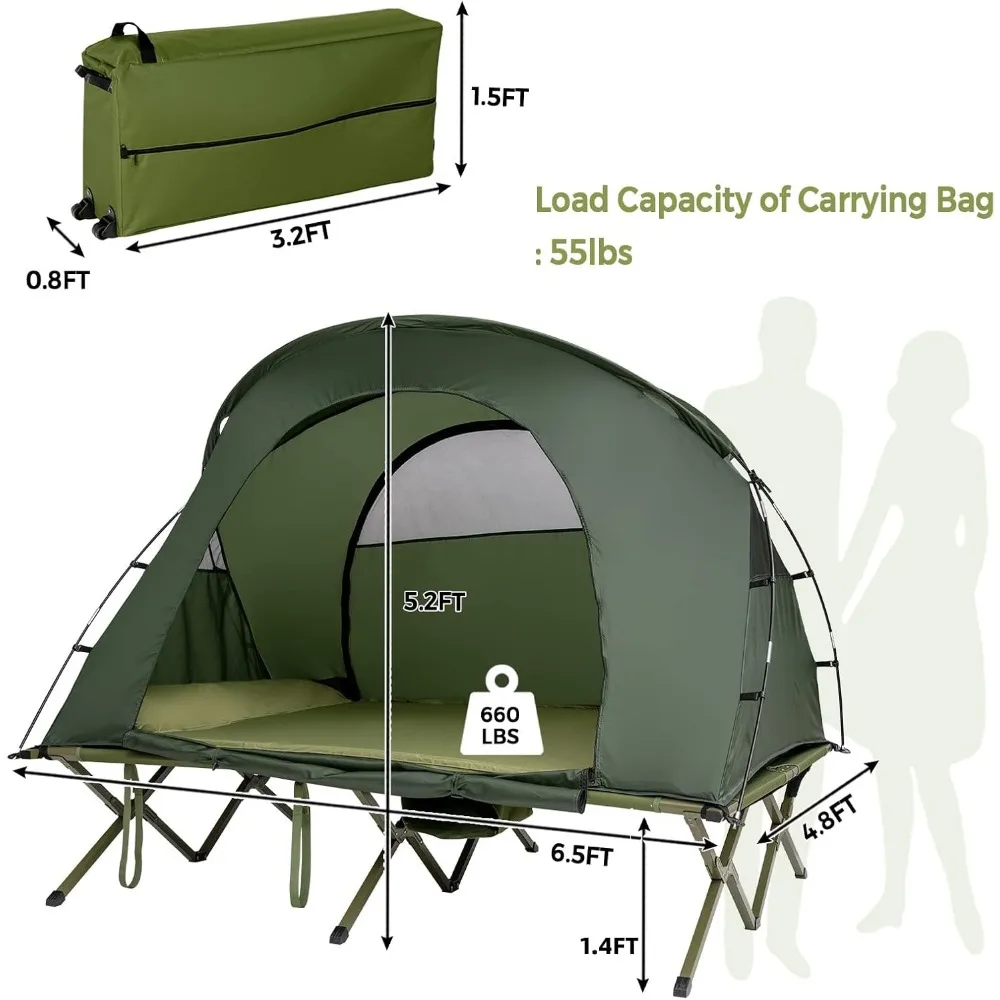
The additional protection against heat loss provided by windproof tents in snow complements your sleeping system’s insulation, creating a more comprehensive thermal barrier.
Strategic Site Selection and Tent Setup
Choosing the Optimal Location
Where you place your tent significantly affects its thermal performance:
- Seek natural windbreaks such as rock formations, dense stands of trees, or terrain features that block prevailing winds
- Consider sun exposure – eastern-facing sites receive morning sun, helping to warm your tent earlier
- Assess terrain for thermal advantages – cold air sinks to low points, making mid-slope positions often warmer than valley bottoms
Snow-Specific Site Preparation Techniques
Properly preparing your site in snow conditions is crucial:
- Create a packed platform by stomping down snow with snowshoes or skis until firm
- Allow the platform to “set” for 20-30 minutes when possible, as compacted snow hardens to provide a stable base
- Consider digging a shallow pit for your vestibule to create a cold sink for better warmth in the sleeping area
- Build snow walls on the windward side when camping in exposed areas
Tent Orientation Strategies
How you position your tent affects its thermal performance:
- Align the lowest profile of the tent toward the prevailing wind
- Position doors away from wind direction when possible
- Consider morning sun exposure to help warm the tent naturally
Mastering winter snow tent setup techniques ensures your shelter provides maximum thermal protection, while understanding if a 2-person tent is actually big enough for your winter gear helps prevent overcrowding or excessive empty space that’s harder to keep warm.
Advanced Insulation Techniques
Ground Insulation Enhancement
Beyond basic sleeping pads, consider these ground insulation strategies:
- Use a closed-cell foam pad as a tent floor liner beneath all sleeping areas
- Place emergency/space blankets (reflective side up) under sleeping pads to reflect body heat
- For extreme conditions, create a “floor sandwich” with a ground cloth, reflective layer, foam pad, and then sleeping pads
Interior Tent Insulation Strategies
Improve your tent’s insulation capabilities with these techniques:
- Line the interior walls with emergency blankets (shiny side in) to reflect radiant heat, but leave adequate ventilation to prevent excessive condensation
- Consider commercial thermal tent liners when available for your model
- Pack snow around the tent’s lower perimeter to seal gaps and reduce ground-level drafts
Vestibule Management
Your tent’s vestibule serves as more than storage space:
- Use the vestibule as a thermal buffer zone between the sleeping area and outside
- Store snow-covered gear here to keep moisture out of the main tent body
- In extreme conditions, fill unused vestibule space with dry gear or snow blocks for additional insulation
Properly designed backpacking tent vestibules provide crucial space for this thermal management strategy.
Condensation Management: The Key to Dry Warmth
In cold-weather camping, condensation management becomes critical. When warm, moisture-laden breath meets cold tent walls, condensation forms—which can dampen gear and reduce insulation effectiveness.
The warming paradox of winter camping is that better-insulated tents often experience more condensation issues because they trap more moisture. Balancing ventilation with heat retention requires:
- Opening upper vents while keeping lower areas sealed
- Creating micro-circulation patterns by positioning vents on opposite sides
- Adjusting ventilation based on changing overnight conditions
- Wiping down interior walls in the morning before condensation can drip onto gear
Advanced mountaineering tents incorporate sophisticated ventilation systems that help manage this delicate balance between airflow and heat retention.

Personal Preparation and Supplemental Heat
Clothing System Optimization
Proper clothing significantly enhances your thermal efficiency:
- Pack dedicated dry sleeping clothes that never leave your tent
- Layer following the same principles as daytime: moisture-wicking base layer, insulating mid-layer, and an insulating top layer
- Pay special attention to extremities—wear a hat, dry socks, and consider lightweight gloves when sleeping
Body Heat Management Techniques
Your body is the primary heat source in your tent:
- Perform light exercises before entering your sleeping bag to generate heat
- Consume adequate calories, particularly slow-burning fats and complex carbohydrates, before sleep
- Stay properly hydrated, as dehydration impairs your body’s temperature regulation
Safe Supplemental Heat Options
Consider these additional heat sources for extreme conditions:
- Hot water bottles (fill with boiling water, seal tightly, and place in sleeping bag)
- Chemical heat packs positioned near core areas or feet
- The “hot rocks technique”—heating rocks near a fire, allowing them to cool slightly, then wrapping in cloth and placing in the tent (requires extreme caution to prevent burns or fire)
Understanding wind resistance in alpine tents helps ensure your shelter maintains warmth even in harsh, gusty conditions.
Two-Person Specific Considerations and Advantages
Two-person winter camping offers distinct advantages and challenges for thermal efficiency:
- Space efficiency: Position sleeping pads directly adjacent with no gaps to maximize shared warmth
- Body heat sharing: While two people generate more heat than one, the effect is modest—perhaps raising tent temperature by 2-3°F
- Gear organization: Develop a system that keeps essential items accessible without creating cold spots or drafts
- Coordinated condensation management: Align sleeping positions to direct breath toward ventilation points rather than onto gear or tent walls
Proper tent size selection is crucial for thermal efficiency. As explained in our guide on what size tent is good for 2 people, a tent that’s too large creates excessive air volume that’s difficult to warm, while one that’s too small leads to excessive condensation from overcrowding.
Heavy Duty 4 Season Tent, Mountaineering Tent, Winter Camping Tent
$870.40 Select options This product has multiple variants. The options may be chosen on the product pageUltralight Backpacking Tent, Ultralight Dome Tent, Winter Camping Tent
Price range: $369.63 through $370.07 Select options This product has multiple variants. The options may be chosen on the product pageHeavy Duty 4 Season Tent, Ultralight Freestanding Tent, Winter Camping Tent
$3,722.66 Select options This product has multiple variants. The options may be chosen on the product pageBackpacking Tent with Vestibule, Freestanding Backpacking Tent, Lightweight Backpacking Tent
Price range: $446.89 through $447.22 Select options This product has multiple variants. The options may be chosen on the product pageBackpacking Tent with Vestibule, Trekking Pole Backpacking Tent, Waterproof Camping Tent
Price range: $271.99 through $519.52 Select options This product has multiple variants. The options may be chosen on the product pageHeavy Duty 4 Season Tent, Winter Camping Tent
$638.69 Select options This product has multiple variants. The options may be chosen on the product page
Common Questions About Snow Tent Thermal Efficiency
Is a smaller tent always warmer for two people?
Generally yes, as there’s less air volume to heat. However, extremely tight quarters lead to more condensation and moisture issues. The ideal balance provides just enough space for occupants and essential gear.
How much warmer is a dedicated winter tent compared to a 3-season tent?
A properly designed 4-season tent might be 5-10°F warmer than a 3-season tent in the same conditions, primarily due to reduced ventilation and sturdier materials—not because of inherent insulation properties.
Can I safely use a heater inside a snow tent?
Most portable heaters present significant carbon monoxide and fire risks in tents. Only specially designed tent stoves used with appropriate tent designs (with stove jacks) can be considered, and even then require extreme caution and proper ventilation.
What’s more important: the tent or the sleeping bag?
Your sleeping bag and pad system is far more important for warmth than your tent. The tent primarily provides protection from wind, precipitation, and snow—your sleep system provides the actual insulation.
Will my body heat significantly warm the tent’s interior?
Not significantly. Two people might raise the ambient temperature in a small tent by just a few degrees. Body heat primarily warms your sleeping bag, not the entire tent interior.
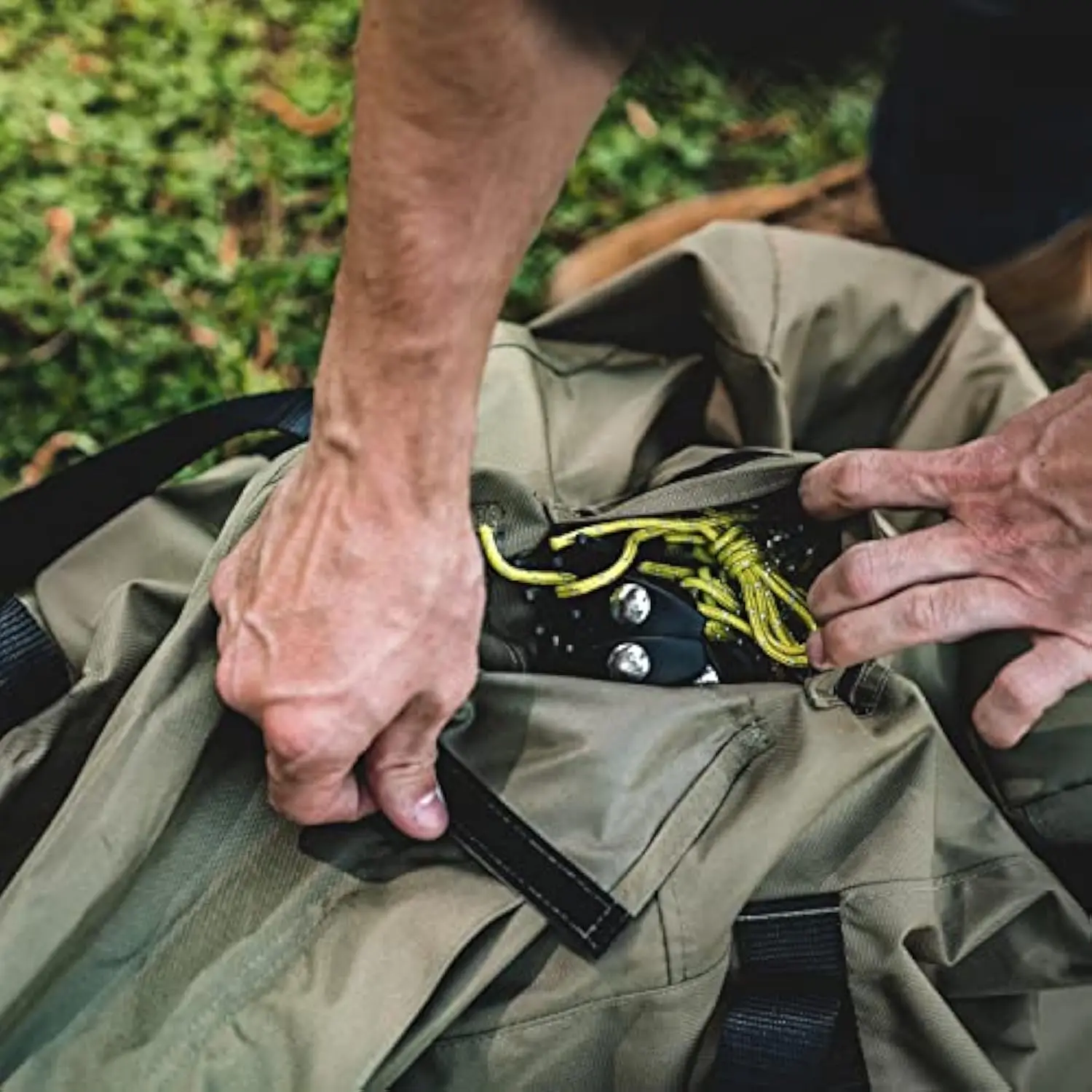
Tent Heaters: Safety and Efficiency Considerations
While the idea of a heated tent sounds appealing, heating options require careful consideration:
Types of Tent-Compatible Heaters
- Electric heaters require significant battery power or external power sources rarely available in winter backcountry
- Catalytic propane heaters designed for indoor use produce less carbon monoxide but still require proper ventilation
- Dedicated tent stoves work only with specialty tents featuring stove jacks (openings for the chimney)
Critical Safety Requirements
- Adequate ventilation is non-negotiable with any combustion-based heat source
- Carbon monoxide detectors should accompany any heating device
- Fire risk remains significant—many tent materials can ignite easily
In most winter camping scenarios, a properly rated sleeping system combined with the techniques described throughout this guide eliminates the need for supplemental heating devices. When selecting a winter shelter, consider essential features for snow camping tents that might accommodate safe heating options if absolutely necessary.
Thermoregulation in Extreme Cold: Beyond Basic Techniques
When venturing into extreme cold (below -20°F/-29°C), additional measures become crucial:
- Vapor barrier liners inside sleeping bags prevent body moisture from dampening insulation
- Double sleeping pad systems with combined R-values above 8
- Sleep with critical items like boot liners, electronics, and water containers to prevent freezing
- Recognize early signs of hypothermia: uncontrollable shivering, confusion, fumbling hands
Safety should always override comfort in extreme conditions. If you or your partner show signs of dangerous cold exposure, immediately implement emergency warming procedures and consider terminating the expedition if conditions exceed your gear capabilities.
By understanding and implementing these comprehensive thermal efficiency strategies, your two-person snow camping adventures can be not just survivable, but comfortable and enjoyable. With proper preparation and the right equipment from Explore Elements, you can confidently extend your camping season through the winter months and experience the serene beauty of snowy wilderness in comfort and safety.

